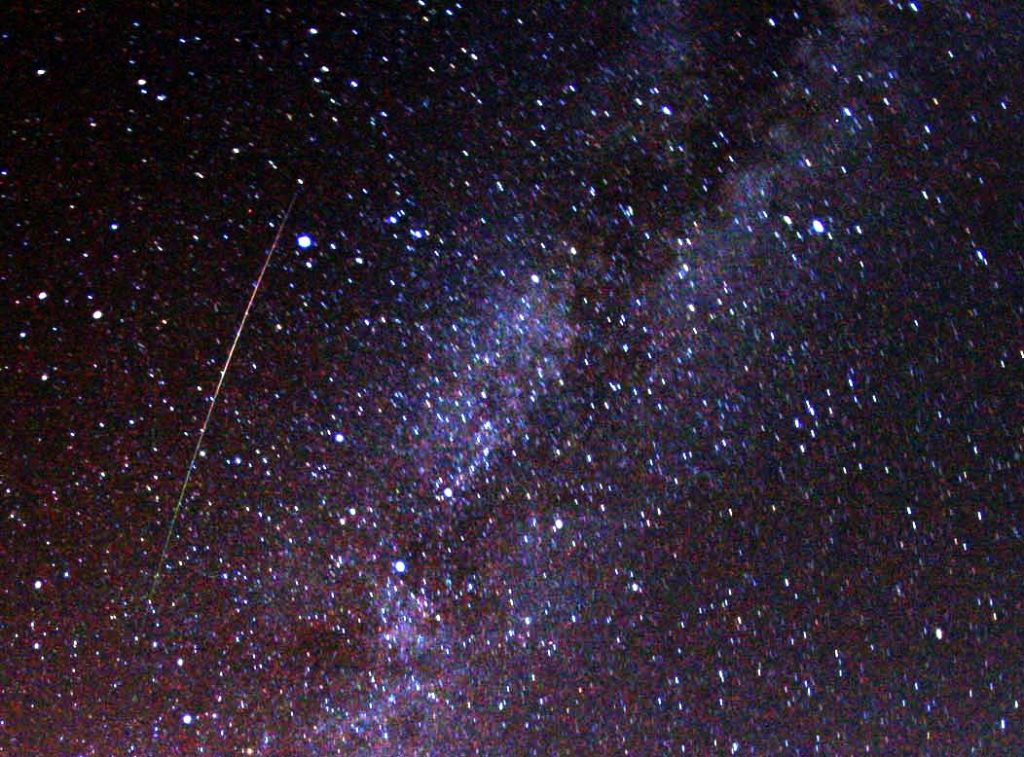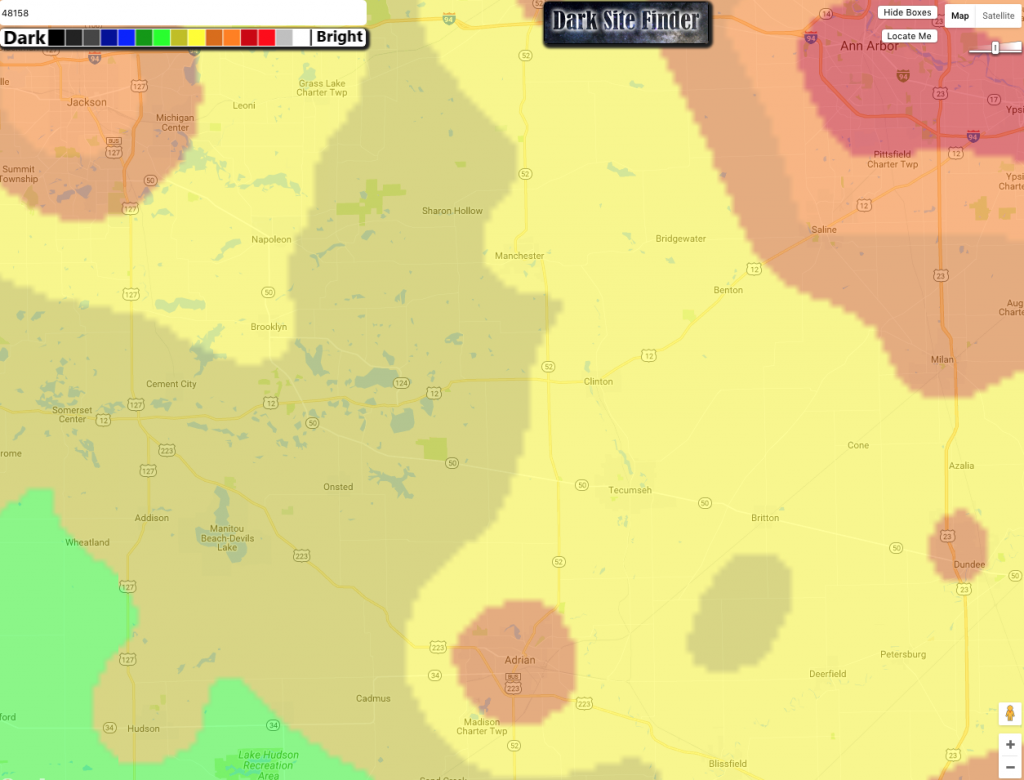Shooting stars over Manchester this week

A multicolored, long Perseid meteor striking the sky just to the left of Milky Way.
We're passing into the debris field of a comet, folks. Comet Swift-Tuttle passes by Earth every 132 years, and it leaves behind a debris field, and every August the planet passes through the dust and dirt and rocks. When we do, some of that stuff is pulled down to Earth where it burns up in the atmosphere, creating these quick fiery trails across the night sky. These pea-sized bits hit the air going 133,000 MPH.
This year, the so-called Perseid Meteor Shower will reach its peak on August 11th and 12th, with more than 150-200 meteors per hour during the peak fall between midnight and dawn on each night. The two hardest things about seeing meteors are finding a dark spot, and looking in the correct direction.
On the first count, it's recommended that you use a dark site map like the one provided by Dark Site Finder. As shown in the image below, urban areas are brighter than rural areas, so if you are staying in the Manchester Area, west of the village is the darkest in the region. If you want to get serious, you can see that it gets really dark south of Hudson, along the tristate border. But if you have a chance this week, go north. In the lower peninsula, the Huron National Forest is seriously dark. We even have an official Dark Sky Park near Mackinaw City! But most of the Upper Peninsula is darker than almost anywhere in the United States east of the Mississippi (except Maine).
On the second count, we have included below a star chart. The Perseids are called "The Sons of Perseus" and appear to come from the constellation of Perseus. (Here is a good article on how to read a star chart.) Spacedex.com gives the following advice for Michiganians: "Once you have settled down at your observation spot, face half-way up toward the northeastern portion of the sky. Looking northeast, you will have the constellation of Perseus, the radiant of the Perseids shower, within your field of view. Not coincidentally, the Perseids meteor shower is named after the constellation Perseus for the reason that they appear to originate from the sparkling Greek “hero.”











You must be logged in to post a comment Login